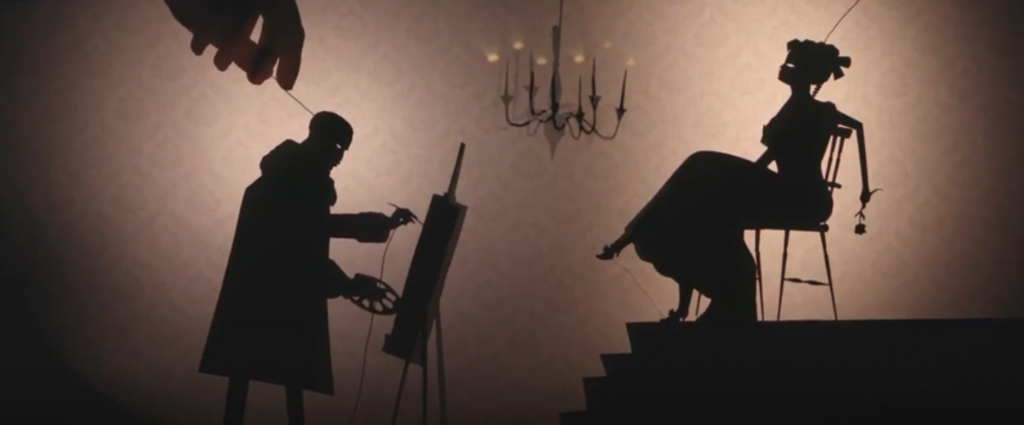A roundtable discussion featuring Amanda Howell (Griffith University), Patricia Pisters (University of Amsterdam), James Rendell (University of South Wales), Emma Train (University of Texas at Austin), Johnny Walker (Northumbria University), Harry Warwick (University of Warwick), Brandon West (University of Kentucky)
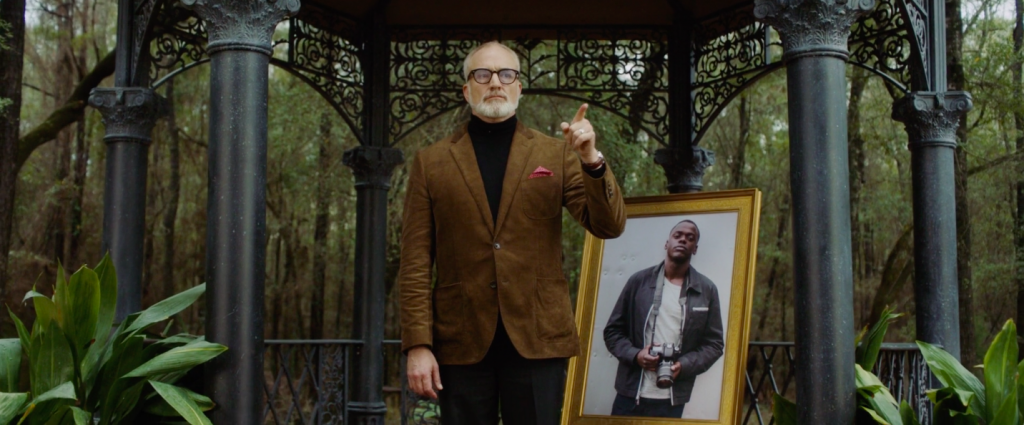
Introduction
Last fall, in advance of the 2020 U.S. Presidential election, I signed on to teach a spring semester seminar on contemporary horror cinema. The trepidation I felt in doing so hinged entirely on the outcome of the election, knowing that were we to be facing the prospect of four more years, opting in to a further quantum of terror seemed an onerous ask of my students and myself.
Fortunately we were all saved (albeit narrowly) from that particular contemporary horror, and the seminar was an altogether enjoyable one for me and (I hope) the students, a few of whom have allowed me to feature their video essays on NRFTS’s YouTube site; I hope you’ll give them a watch. Yet clearly the horrors of the contemporary world haven’t abated entirely, not even close, such that the Gramscian assessment that Patricia Pisters quotes filmmaker Mati Diop invoking below remains an all too apt title for this roundtable.
As many within the media studies academic community have noted, among the few bright spots of the last year were the numerous online gatherings – book launches, virtual conferences, reading groups, and the like – that sprouted up to connect far-flung folks and energize our intellectual spirits. Particularly generative and dynamic were the conversations happening around contemporary horror. Having had the pleasure of participating in a SCMS seminar titled “Spectacles of Anti-Black Violence: Teaching Horror ‘With Everything Going On Right Now,’” organized by Lauren McLeod Cramer and Catherine Zimmer, I came away feeling renewed by not just the robust level of engagement (on a Sunday morning at that) but the collegiality of so many peers actively supporting each other’s pedagogical pursuits. Likewise, at the many other horror-focused forums I attended, I was impressed by the camaraderie and investment in channeling the genre’s mutual hold on us into actively engaged scholarship. As the contributors to this roundtable note, much of their work in this arena has been sparked by conversations with colleagues and through recommendations shared via networks and communities devoted to horror studies and scholar-fandoms. Across these platforms, a common thread emerged that led me to organize this roundtable: horror’s centrality to our thinking and teaching about the present.
Horror’s usefulness in helping us think through issues around cultural identities and anxieties has been powerfully demonstrated by its resurgence of late, and by the flourishing of horror studies scholarship. As roundtable participant Brendon West encapsulates as the core of his work (and explores in his forthcoming NRFTS article on Herzogian notions of truth), the collapsing barrier between fiction and reality clears new ground for horror. Having focused in my own work on screening transgressive sexualities and genders, I first turned to teaching horror with an eye to the genre’s seemingly boundless capacity for imagining the darker realms of inhabiting bodies and desires deemed Other in a heteropatriarchal world. As Amanda Howell and Patricia Pisters note below and explore more fully in their co-authored monograph Monstrous Possibilities: The Female Monster in 21st Century Screen Horror (Palgrave, forthcoming) and recent book New Blood in Contemporary Cinema: Women Directors and the Poetics of Horror (Edinburgh, 2020), these imaginings have grown richer still in recent years, as more and more women filmmakers/creators venture into horror – inventively hybridizing and vitally reshaping it as they do.
Alongside gender, the salience of race drives the discourse and participation of those consumer-creators demanding and effecting change, as revealed in James Rendell’s article on anti-fan meme culture and his recent conversation with Kristin Warner on the politics of casting. The responses below attest to contemporary horror’s potency for galvanizing anti-racist enlightenment and struggle. If one could (or should) single out just one film as a gamechanger here, it would of course be Get Out (Jordan Peele, 2017), a work that fittingly comes up again and again in any contemporary conversation about horror, including this one. It’s a key question going into the summer movie season whether the rebooted Candyman (Nia DaCosta, 2021) will have the same impact, and furthermore where – meaning, quite literally, whether its release will entice audiences back to the theatre. As much as Emma Train’s remembrance of her own first viewing of Get Out made me nostalgic for the communal viewing experience (of horror films expressly) and excited for its return, the compelling points she raises about the affordances of streaming culture around issues of ability and trauma, explored in her article on the power of affective threat in Get Out, reveal the possibilities opened up by new modes of distribution and reception.
Also reverberating in our recent moment is Harry Warwick’s look back at Videodrome (below and in his NRFTS article) from our current moment of streaming wars and vertical reintegration, suggesting that the time is propitious for, if not a reboot, at least a Cronenbergian contemplation of the dangers of media deregulation and privatization. Similarly gaining urgency with every passing year is horror’s registering of human-enacted environmental atrocities, as Johnny Walker’s forthcoming NRFTS article richly demonstrates in looking at Melanie Light’s The Herd (2014) as a tool for animal welfare activism.
It’s a testament to the ferment of exciting scholarship on horror cinema that the participants in this roundtable had to be limited to those with work recent or forthcoming in the journal. With deepest appreciation to the contributors, I hope you find their conversation here stimulating.
Maria San Filippo
Editor, New Review of Film and Television Studies
How did you come to be interested in the contemporary horror topic(s) and/or text(s) you’ve written about for NRFTS?
Amanda Howell
I have a longstanding interest in horror and the gothic as genres or modes of storytelling whose paranoid remaking of the ordinary and focus on the flamboyantly abject and monstrous speak to the social and historical in a way that other popular genres cannot. My earlier research into this area focused on gothic masculinities—those conjured, for instance, in response to the Vietnam War as a watershed moment for America, marking a shift not just in popular perceptions of national identity but also ways of knowing and understanding the past. But more recently, partly due to the influence of research collaborations I’ve been lucky enough to participate in, such as the Imagining the Impossible network based in Denmark—my focus on gender and genre has shifted to those resistantly self-reflexive femininities emerging in the form of what might be regarded as monstrous female anti-heroes.
In twenty-first century film and television horror—such as The Babadook (Kent 2014), A Girl Walks Home Alone at Night (Amirpour 2014), Penny Dreadful (Showtime/SKY 2014-16), The VVitch (Eggers 2015), Raw (Ducournau 2016), The Girl With All the Gifts (McCarthy 2016), Santa Clarita Diet (Netflix 2017-19), and Us (Peele, 2019)—we find what Barbara Creed labelled the ‘monstrous-feminine’ (1993) reimagined as not (just) abject objects of horror, but as persuasively engaging, if dangerous, subjects with whom we are bid to identify (however reluctantly, in some cases). This gendered and generic development can be viewed as part of a much broader twenty-first century trend toward putting more complex female characters on screen, perhaps most marked in television during the recent rise in scripted programming. But it is also evidence of what Matt Hills has identified as the ‘inherently reflexive’ character of horror (2005), which ranks innovation highly among its marketable pleasures.
Patricia Pisters
As a teenager I really did not like watching horror movies. I remember seeing Brian de Palma’s Carrie for the first time on television, somewhere in the late 1980s. It was a dreadful experience. It was only later, after I had entered the field of film studies that I found new ways of appreciating the genre, and especially the ways in which horror deals with everything that in normal life (and ‘normal’ genres) lies beneath the surface. In the 1990s I started to teach horror cinema, reading among others Creed’s Monstrous-Feminine and Clover’s Men, Women and Chainsaws with the students and watching films collectively in the famous and carnivalesque Nights of Terror all night festival. Then for a long time I forgot about the genre, because I thought there was nothing new happening, even if there were still great horror or fantastic films that came out. But now we are in a new wave of the horror genre where its aesthetics and topics are taken up in both Hollywood (Get Out) and in art cinema (Let the Right One In) and where more women directors make horror or horror-inspired films (The Babadook, Raw, Revenge, Evolution, Atlantics, the list is long…). Something new is happening. Considering the fact that all the films that Creed and Clover were writing about were male-authored, I got interested in the question: what happens when we have female authors that address the monstrous, the horrific, the shocking, the dark?
James Rendell
My interest in horror stems from my fan then subsequent scholar-fan dispositions, particularly towards horror media from other parts of the world, the genre’s transnational flow within global media ecologies, and the meaning-making practices of transcultural audiences. My current research explores the rise of what Stacey Abbott has highlighted as ‘a new Golden Age of TV horror’ (2018: 120). Whilst horror has been a popular television genre since the technology’s inception, traditionally, in the UK and US this has predominantly centred on Gothic adaptations that engender cultural cachet from legacy media (Wheatley 2006: 9), genre hybridisation with science fiction or fantasy that generically exnominates horror (Johnson 2005; Hills 2005), and a visuality premised on restraint and suggestion (Hills and Williams 2005).
However, I became interested in examining twenty-first century horror television in part due to the changes I was seeing onscreen that were markedly different from existing relationships between the genre and TV, and how this had been previously theorised: increasingly graphic imagery akin to cinema; engagement with myriad subgenres and cycles such as body horror; and marketing that stressed, rather than obfuscated, overt horror qualities (Calvert 2014: 186). With this, my research also explores the trickledown of horror that begun on premium cable channels to network broadcasters and the spread of the genre across post-TV landscape, where the increased digitisation and ontological destabilisation of television (Lotz 2017; Johnson 2019) has opened up new areas of studying horror. This includes new subgenres such as horror reality TV and vlog horror (e.g. I Survived a Zombie Apocalypse BBC Three 2015; Killer Camp ITV2 2019; Fight of the Living Dead YouTube Premium 2016-17), a cycle of TV transmedial extensions of popular horror movies (e.g. The Purge USA Network 2018-19; Scream MTV/VH1 2015-19; Ash vs The Evil Dead Starz 2015-18), new platforms for content dissemination (e.g. Twitch.TV and Shudder), and formal and informal methods of media consumption (e.g. streaming and downloading).
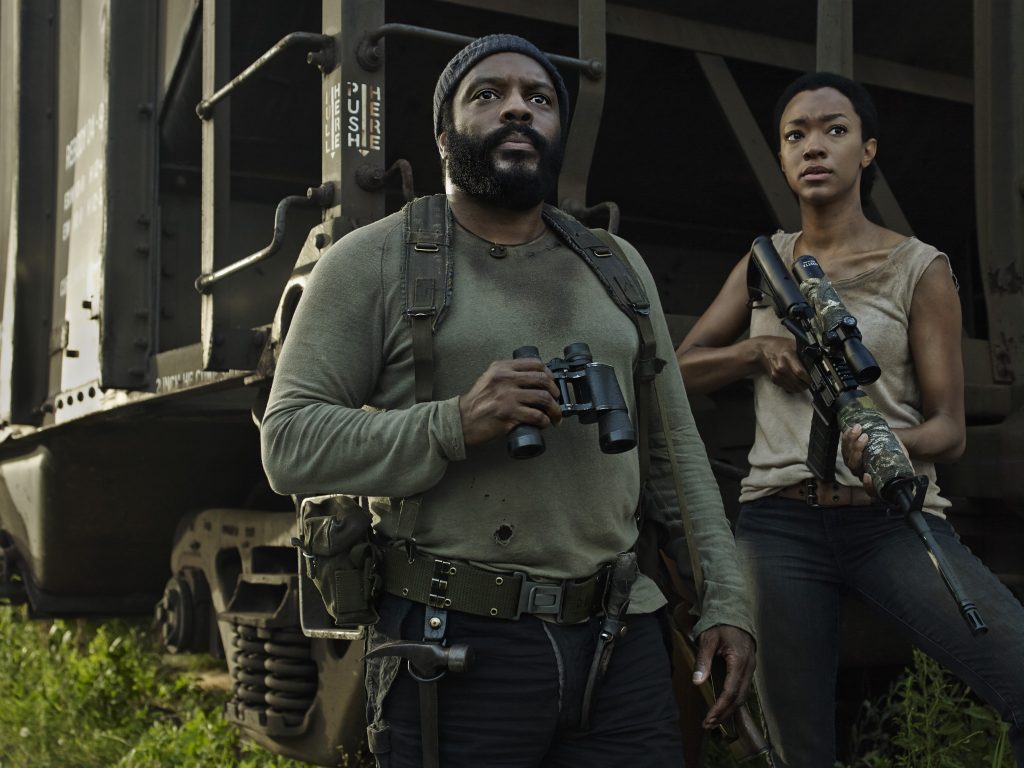
Photo Credit: Frank Ockenfels 3/AMC
Moreover, beyond textual, industry, and platform analyses I am fascinated by the complexities of audiences’ responses and readings of horror media. My work aims to stress the heterogeneity and complexity of viewer engagement with the genre. For example, my previous research (see Rendell 2019a, 2019b) has looked at how Black anti-fans of The Walking Dead (AMC 2010-) read the series’ neglect, maltreatment, and exploitation of Black human survivors as representative of the systemic racial violence by the state on Black citizens in North America. While the show has been critically lauded and has a strong international fan-following, and does not clearly offer socio-political commentary on US race relations (in comparison to Get Out (Peele 2017) or Lovecraft Country (HBO 2020), for example), these audience members’ intersectional identities informed how they viewed and ideologically critiqued The Walking Dead that challenges existing quality TV accreditation. Additionally, my study (Rendell 2021) into transcultural J-horror fandom evidenced fans are far more critical and selective of the subgenre than previously argued (see also Pett 2017). I also found that different audiences’ reading schemas hermeneutically sealed texts as culturally Japanese given their rarity but could also (re)position the same content as transnational by locating aesthetic kinship with valued Western horror creatives such as David Lynch. My current research builds on this, exploring media immersion and the variety of reactions by viewers of twenty-first century post-TV horror which oscillate between emotional, ideological, and aesthetic responses in what I am conceptualising as audiences’ abject spectrums. This also addresses the way fans, and indeed anti-fans, are not just consumers of horror but are also producers of media content and how meaning-making is inflected within their own creations. Exploring various fan groups and practices online has expanded the breadth of my analysis of horror participatory cultures, ranging from the textual and digital – such as fan art and Tumblr imagery – to the haptic and tactile – such as gastronomic crafts, offline horror themed social events, and the collecting of television horror soundtracks on vinyl. These particular avenues of investigation also seek to broaden the discussions surrounding horror and transmedia.
Emma Train
I saw Jordan Peele’s Get Out in theatres when it first came out in early 2017. I was really struck by how the film excited and moved the audience. It was one of the most lively and interactive movie screenings that I have experienced; everyone was alternately laughing and gasping and screaming throughout the entirety of the film. This is precisely where I think the genius of Get Out lies—in its deft generic play, especially in its ability to inspire both a kind of tense humor and fear. I’m personally always drawn to films and texts that innovate genre and that self-consciously pressure the boundaries and definitions of categories like “horror,” “science-fiction,” and “comedy.” As I argue in my article [forthcoming in our Winter 2021 issue], Peele’s ability to shift between, and to even layer, these multiple registers create such a playful and pleasurable manipulation of audience expectations, all while offering a trenchant political critique of race and neoliberalism in the US.
I’m drawn to Get Out because I think that, too, Peele’s use of both comedy and horror (not to mention sci-fi and camp) is prescient in the way that it really articulates the atmosphere and tone of contemporary American politics, namely the deep post-Trump dissonances in “reality” that we are experiencing nearly five years later. Put simply, “what’s your reality?” is Get Out’s initial query and challenge. What realities, particularly what realities of violence and entrapment, are your lived experience? These questions are even more urgent today in 2021, especially now in the wake of Black Lives Matter, the killings of Breonna Taylor and George Floyd, and the Capitol Riot, among innumerable other examples.
I also think the film sticks with you because it is so rich and each new watch reveals new details and a new angle into the film. In addition to the film’s critique of post-racial politics and white supremacy, there is so much else going on with gender, sexuality, class, and disability. I’m excited by the future possibilities of critique and analysis of this film, especially in conjunction with the equally rich and challenging Us (Peele, 2019).
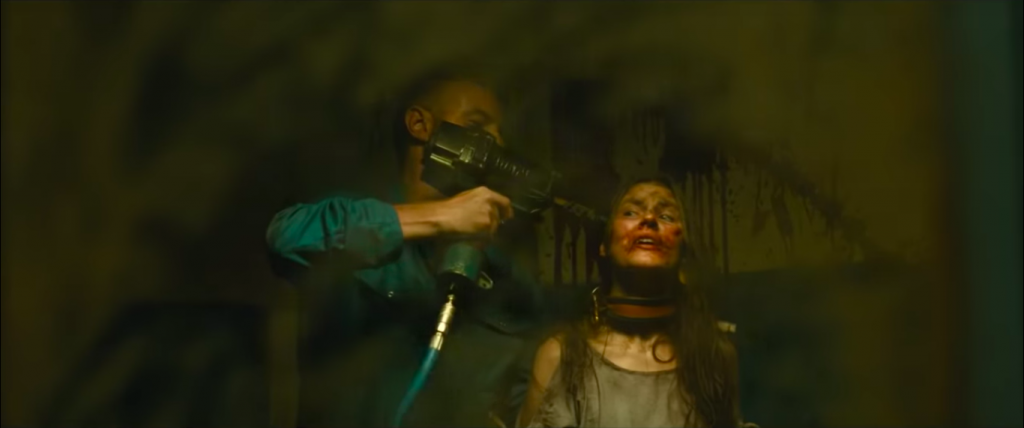
Johnny Walker
I’m very lucky to work in a Department where research into horror media is valued as a legitimate line of academic enquiry. This means that, along with many a stimulating conversation, colleagues are forever recommending films to each other. A colleague of mine, Steve Jones, having just published his first book Torture Porn, alerted me to Melanie Light’s The Herd in 2014: a film that borrows from the ‘torture porn’ cycle in numerous ways, but which puts an interesting and highly-politicised spin on it. Steve, knowing I had recently decided to adopt a plant-based lifestyle, figured I’d take an interest in the film, given that it is the first ‘vegan-feminist’ horror film and made by an upcoming British filmmaker. At the time, I had just submitted the manuscript for my first book, Contemporary British Horror Cinema: Industry, Genre and Society which, in part, explored microbudget horror production post-2000 but which, ultimately, did not focus in any meaningful way on the hundreds of short films produced during the same period. When Steve showed me The Herd, thus, I couldn’t help but feel that my monograph was lacking somewhat for not having engaged with it. My article about The Herd for the New Review [forthcoming in 2022] thus, is my attempt at redressing the balance. Beyond this, the film itself is a curio that plays horror film festivals, is popular on YouTube, but was also conceived of as an activist work which is now embraced by leading animal welfare charities. My article delves into its production history and offers an assessment of its relevance to current debates regarding the intersection between feminism and the animal liberation movement.
Harry Warwick
I watched Videodrome (1983) for the first time during my doctoral studies, when I was exploring the relationship between Hollywood films (though Videodrome, it’s worth noting, is both Canadian- and American-made) and the ‘new enclosures’—the new dispossessions sweeping across the United States (and indeed much of the world) since 1973. It seemed to me then that Videodrome could potentially be read as an allegory of one particular form of dispossession, the privatisation of the electromagnetic spectrum. Looking deeper into it, however, I found that such privatisation was only one aspect of a paradigm shift in Canadian media culture, as ‘communications’ technologies began to supersede those associated with ‘broadcast’ (to take media scholar Marc Raboy’s framing). The history of Canadian culture—from the early efforts to nurture a national culture unblemished by American influence to the later adoption of a quasi-American, industrialised model of cultural production—seemed to offer a new way into Videodrome, and laid the foundations for my article.
Brendon West
In graduate school, I wrote an essay on ironic self-awareness in Wes Craven’s New Nightmare (1994) and Scream (1996). I was especially interested in how this irony tends to blur the line between fiction and reality within these narratives, and I further noticed that other horror films, such as Rose’s Candyman (1992), blur this line as well. Realizing that horror and reality remains an understudied area, I completed a thesis on the topic, centering on the three films above among others. This particular niche of horror studies fit my research interests unusually well, as it allowed me to draw on my eclectic interests in the fields of psychology, philosophy, and film and literary studies as I considered how and why horror films blur the line between fiction and reality.
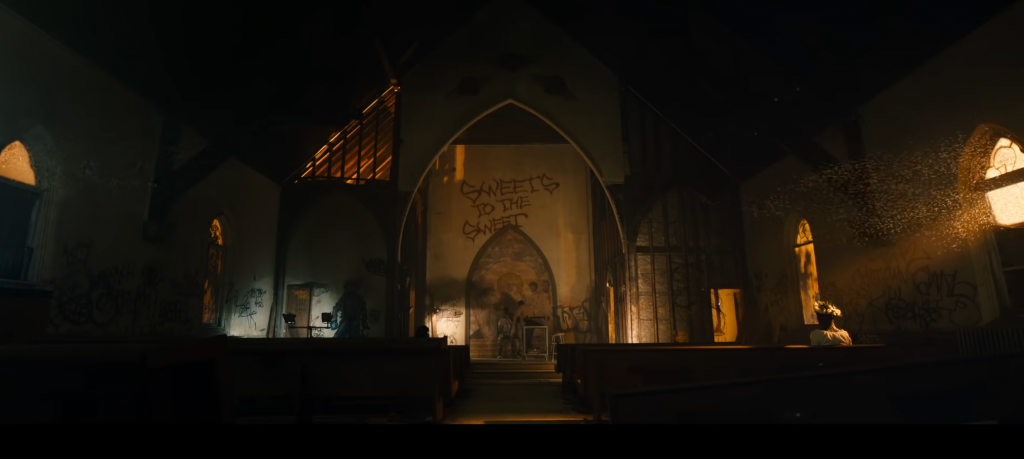
How do you see shifting distribution and reception practices affecting horror’s role in our culture?
Emma Train
I think this is such an interesting question especially post-COVID and the virtual impossibility of the traditional movie theatre viewing experience. Countless others have raised this question, but what does it mean to watch a horror movie in bed on your 13-inch laptop screen? Does that watching experience make the movie less “scary” or less horrific? Anecdotally, I have seen the shift to streaming as democratizing the horror genre by making it more accessible, psychologically and physically, to those who might otherwise be averse to watching a horror film in theaters. I am thinking of many friends and family members—myself included!—who avoid horror releases because they find it too frightening or too difficult to watch in theaters, but who now might “press play” on a horror movie if they can, for example, watch it in a well-lit room or in bed.
Not to paint too cartoonish a picture of contemporary horror films, but so many popular films in the genre rely on the spatial and technological apparatus of the movie theater (e.g. darkness, extremely loud sounds, a rigid viewer orientation towards the screen) to produce a certain phenomenological response (e.g. jump scares). I think that kind of adrenaline response is exactly what many people want to avoid (so often because it provokes a loss of control and loss of emotional safety) and is exactly what feels unavoidable in a movie theater. In addition, this viewing model can be quite ableist, meaning that the expansive possibilities of viewing experiences that streaming increasingly allows enables us greater agency over our viewing experiences, making the genre more accessible to everyone. In particular, an increased access to horror films via home streaming services will (hopefully) prompt the genre to innovate in creative new ways and to think critically about a new economy of attention. We might read the home viewing experience as increasing the psychological effects of horror by allowing a film to literally creep into each viewer’s home environment. I’m thinking of a film like Midsommar (Aster, 2019), which I streamed at home and which I personally found more terrifying to watch in daylight and during the heat of summer, as if the atmosphere of the film were seeping into my own reality.
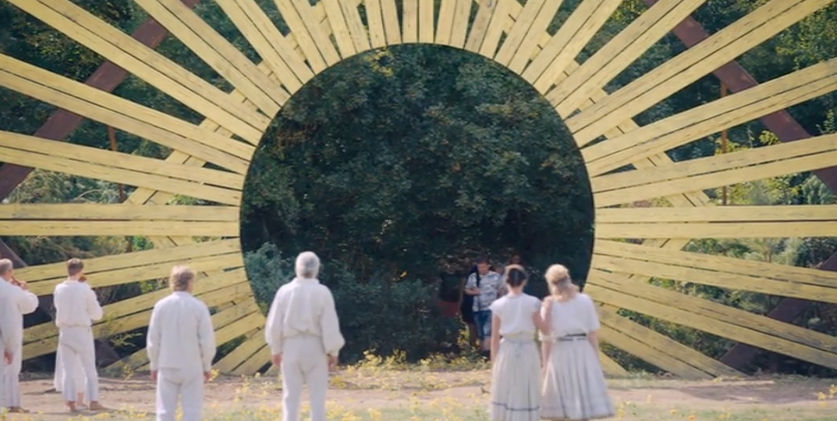
Johnny Walker
Platforms such as Amazon Prime and YouTube have granted microbudget filmmakers more opportunities than ever to formally release their films. Yet these opportunities also mean a saturated marketplace, so it is a lot harder for filmmakers to get their work seen when audiences are repeatedly confronted by choice. Those creatives working with limited resources are supported by small, independent, distributors such as Brain Damage and Mill Creek; but the model such companies use means that, in actuality, only horror fans already aware of such companies are likely to see the films that the companies handle. On the flipside of this, we have to remember that horror remains a very popular genre, with the likes of Netflix and Shudder responding to this in folds. The extent to which individual filmmakers benefit financially from the deals Netflix and Shudder strike, however, remains to be seen. One thing is for sure: the genre itself is very visible, even if individual works/filmmakers struggle to be heard amid the masses of product available.
Brandon West
If anything, I believe horror may be getting even more mainstream. While horror has long been a “cash cow” genre, netting high box office returns from small budgets (see Myrick and Sanchez’s 1999 effort, The Blair Witch Project), the internet has given horror nigh-omnipresence in today’s youth culture. From “creepypasta” to “chaotic fiction,” horror is more accessible today than it has ever been before. Moreover, today’s horror is more readily immersive than yesterday’s. Whereas a film like Blair Witch could claim verisimilitude and even offer a website, its exposure revealed its hoax quickly. Internet horror, by contrast, allows for greater immersion and at greater lengths than possible for a single feature film. Today’s horror, therefore, offers the tantalizing option to experience the barrier between fiction and reality collapsing, to imagine that the horror one is watching online may, in fact, be fact, not fiction. Worse yet, some of the horror (graphic images of real-life atrocities) are fact but occupy digital space along with fiction such that the two blend together and become difficult to discern apart. Thus, today’s youth culture offers the chance to steep oneself in horror in ways yesterday’s youth could not.
Meanwhile, mainstream culture may also be poised for additional exposure to horror. With the success of titles like Jordan Peele’s Get Out (2016) and Bong Joon-ho’s Parasite (2019), it is possible we are entering a period of greater critical acclaim for horror, wherein the genre can achieve prestige that has often eluded it. Of course, I make this prediction (very) tentatively, as one might have made the same argument after William Friedkin’s The Exorcist (1973) or after Jonathan Demme’s The Silence of the Lambs (1991), only to see the genre return to relative critical obscurity after these films’ success. Indeed, there is some reason to think the cycle may repeat. Both The Silence of the Lambs and Get Out saw critics downplay their horror elements, the latter to such an extent that Peele felt it necessary to specify that Get Out is, indeed, a horror film. Thus, horror’s role in our culture remains up in the air, moving forward, though there is cause for thinking the genre may gain increased popularity.
Amanda Howell
Horror has always been a genre that is international in scope, as evidenced by global patterns of adaption and variation going back to cinema’s silent era. But there’s no doubt that the convergent character of twenty-first century screen entertainment has heightened horror’s impact worldwide, broadening its fan base and giving a broader audience access to a varied international array of screen entertainments (an audience that includes previously under-serviced market segments now recognised as desirably lucrative such as female tweens 8-12 and adult female viewers 25-54). Everything from arthouse and indie horror films by emergent auteurs, to the franchised products of multimedia conglomerates, to ‘quality’ television horror, to the work of fan ‘prosumers’, make use of video on demand, subscription streaming services, and social media to reach their audiences. Jennifer Kent’s The Babadook was a record breaking success as a VOD title for niche distributor IFC Midnight in 2015. Cable tv production Penny Dreadful found its global audiences through subscription services like Netflix and STAN. And then there are web series –ranging from multinational toy giant Mattel’s self-reflexive fashion doll franchise for tweens, Monster High (2010-present) to the grassroots gothic satire of Adult Wednesday (2013-15) by prosumer Melissa Hunter, both of which use YouTube to reach their audiences. Fandom is more visible and vocal than ever thanks to Tumblr and Twitter, but one of the most striking features of this period for me is how much horror is being produced by self-confessed horror fans—people like Jennifer Kent, Jordan Peele, Guillermo del Toro—who have things to say about horror, also things to say with horror, as a mode of critical and creative engagement with the social and historical.
James Rendell
As others in this roundtable have astutely argued, digital transmedia has helped diversify horror media, circulated content around the globe, offered new means for consuming horror, and attracted new audiences to the genre. This is perhaps because certain genre texts, and particularly long-from serial TV horror, are not all about the scares. Instead, audiences who usually avoid consuming horror due to axiomatic beliefs that the genre is designed to scare and repulse us are attracted to these texts because they offer a more diverse emotional palette (particularly melodrama), ensemble casts with deep characterisation, and the development of hyperdiegeses over a range of media. That the third season of Stranger Things was the most streamed series on Netflix ever exemplifies this (Mumford 2019).

Moreover, given that Netflix keeps their viewing figures closely guarded, publicly releasing this data clearly serves to signpost the quality of the horror show and, ergo, the wider Netflix brand, and Stranger Things as watercooler (post-)TV that encourages audience discussion (see also Matrix 2014). This latter aspect can be extrapolated to consider how digital media facilitates shifting consumption habits and online spaces that foster reception practices beyond simply viewing horror media. Firstly, releasing series in their entirety eschews any broadcast schedule and fosters binge-potential in texts. Traditionally understood as a cult fan practice of viewing VHS and DVD, the ability to, and indeed encouragement of, binge viewing by streaming platforms blurs mainstream and niche fandom as much as the content of horror texts (see also Jenner 2017). Secondly, social media encourages fans to come together to discuss championed horror objects on forums, Facebook pages, and subreddits that strengthen genre communities. Yet, my own research has found lay audiences/non-fans also use social media – usually Twitter and Reddit – to post in situ reactions to horror media in real time as a form of second screen engagement or after the viewing experience. Not only do these aspects all attest to the widening of horror reception, but also how the genre is shaped by wider technological, industrial, and cultural changes and phenomena.
Concurrently, in a world of ever-increasing audience fragmentation, the digitisation of distribution has seen industry also zero in on genre fans and narrowcast audiences. Leviathans such as Netflix and Amazon can do this by not only creating blockbuster horror with wide appeal, but also producing/streaming smaller horror vehicles or more underground subgenre texts in a catch-all manner. This is particularly apparent with Netflix’s global reach and indigenous horror productions that are then streamed around the world as Netflix Originals to transcultural subscribers who seek out obscure genre media. In comparison, streaming services such as Shudder and Arrow rely on dedicated niche genre fans. Whereas Netflix blurs mainstream and cult, both services discursively position themselves as underground through the content they stream and the fans they target in opposition to mainstream media in a more classic popular/cult distinction of horror audiences (Jancovich 2000) that is maintained literally via paywalls. This, again, is symptomatic of the post-TV landscape where myriad genre-specific or taste-bound subscription channels are available to audiences.
However, I think hard formatting is still salient within horror (sub)cultures. DVD has, and continues to, support the transcultural popularity of horror films. More than this, home (re)releases paratextually frame meaning around, and instil value in, horror texts as Jonathan Wroot’s work (2017a, 2017b, 2020) explores with East Asian cinema (including horror films) and the shifting meanings of cult through Western DVD distribution. Likewise, for fans building media catalogues and the extra-textual knowledge DVDs/Blu-rays provide, collecting yields subcultural capital. In the age of media abundance, distributors knowingly tap into these niche sensibilities by creating artificial scarcity by limiting the number of copies released, producing exclusivity and stature for fans within communities and ‘cultifies’ the physical media object. For instance, with One Cut of the Dead: Hollywood Edition (Ueda 2017/2019) the Blu-ray offers over a staggering four hours of content, however Arrow have limited this release to just 2000 copies. We see a similar thing with the ubiquity of digital music, and the boom in popularity of vinyl collection of horror media soundtracks (Sexton 2015). This prompts further questions about the materiality of horror media and audiences’ affective relationships with it.
Patricia Pisters
I think the other participants have already said many interesting things about distribution and reception. I could perhaps just add that there is also an increasing amount of specialised film festivals added to the more established ones such as Fantasia, After Dark and Imagine, which shows that the interest of the fantastic and horror film is growing. I’m thinking of the Final Girls Festival in Berlin and other more recently emerged specialised festivals; but also horror dedicated podcasts such as thefinalgirls.transistor.fm and other online platforms and media help to distribute and dialogue about the place of horror in our contemporary film and media landscape. Perhaps I could also add that on the production side, there have been several grant programs in Europe, among others in the UK to stimulate first films written and/or directed by women and many of these programs delivered really interesting horror films with a difference. Here I am thinking of films like Pin Cushion, Saint Maud and Make Up, to name but a few.
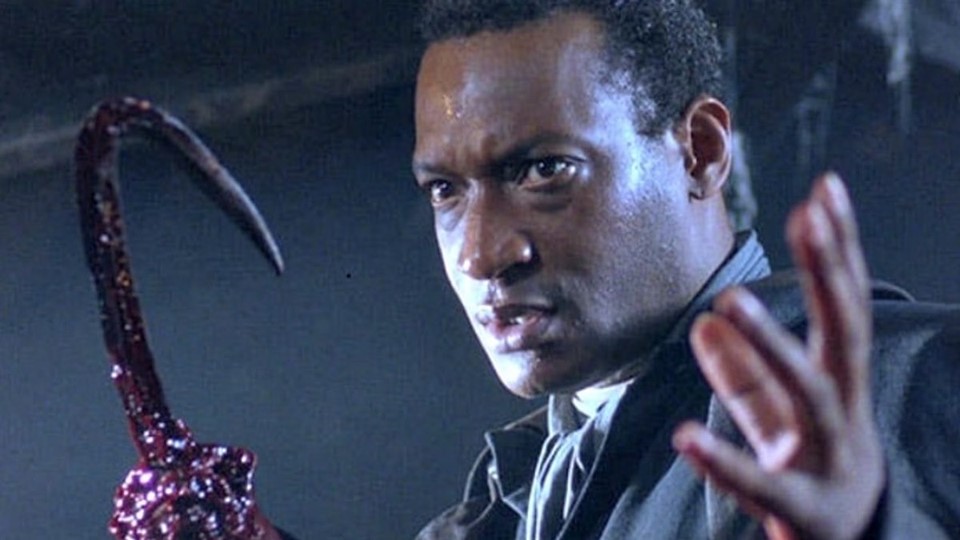
What do you see as the most interesting and/or important recent developments in horror studies?
Johnny Walker
The best stuff happening in horror studies at the moment is work that looks beyond high theory/ahistorical approaches which have – in my view at least – hampered the development of meaningful discussion. The scholars I look towards are assessing contemporary trends in relation to, yes specific films, but also press discourse, industry initiatives and policy, or scholars who are revising film history as we know it through rigorous archival research. From the former category, I’d cite David Church’s recent book Post-Horror, which takes a look at the recent ‘prestige horror’ cycle. Church is a vital voice in the study of popular cinema. We’ll be citing his stuff for many years to come. From the latter category are those scholars such as Tim Snelson, whose book Phantom Ladies: Hollywood Horror and the Home Front is a staggering achievement of film history, in that it looks at how US horror films were produced for and promoted to women in the 1940s. Similarly, The Birth of the American Horror Film by Gary D. Rhodes sheds light on formative examples of (what we’d now term) horror film at the beginnings of cinema. The most important recent work however is undoubtedly Alison Peirse’s collection Women Make Horror: Filmmaking, Feminism, Genre. At a time when academic presses are churning out edited collections about anything and everything, Peirse’s is likely to have a true impact on how popular cinema is written about, discussed and taught in years to come.
Patricia Pisters
As already indicated before, there are a few developments that give a new boost to the horror genre today. The fact that horror aesthetics and horror themes have made a cross-over to both commercial cinema and to art cinema, and the fact that more women directors have embraced the genre actively, makes that the genre is moving beyond its traditional confinements of the typical emotions of fear, disgust and fascination. The first time I realized this emotional extension of the genre is when I saw Jennifer Kent’s The Babadook and realized that I was actually moved, instead of (only) scared because the story is actually about dealing with trauma and loss, rather than confronting (gendered) fears. This matches with developments in horror studies, classics such as Noel Carroll’s Philosophy of Horror, and Creed and Clover’s seminal studies about gender and horror, are still very valid. But new perspectives are added. The mainly American canon of these books, for instance, have been re-evaluated in relation to for instance, Asian horror such as J-Horror and K-horror. Many of which have found Hollywood remakes (think of the Ringu franchise). Gender issues are conceptualized now beyond the idea of male anxieties at the expense of women, and imbued with female agency and gender fluidity.
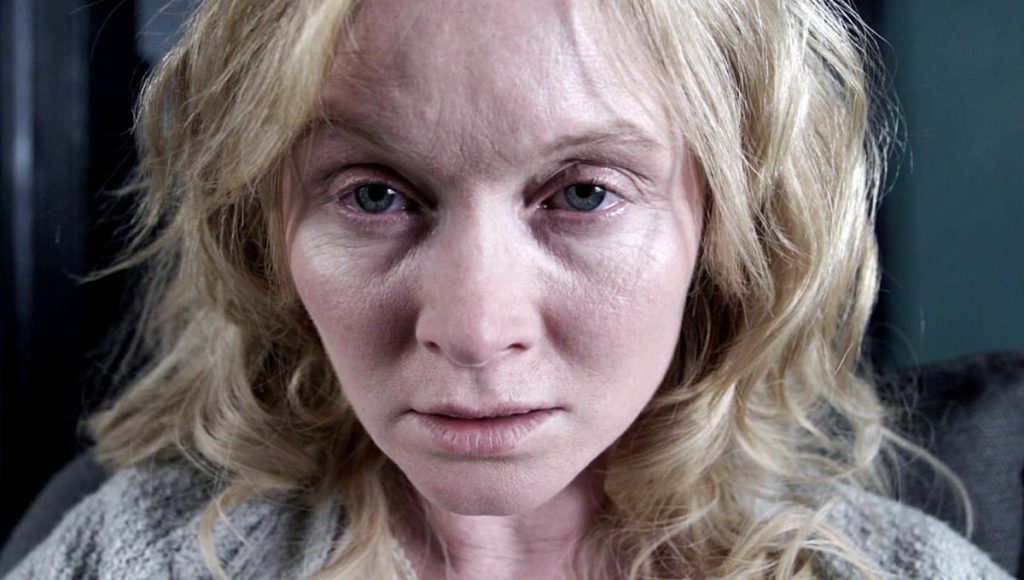
There are also more specialized studies on genaehorror, horror that deals with female reproduction such as Erin Harrington’s recent study. And the more cognitive approach of Rikke Schubart who considers the horror film as a way to master fear and other difficult emotions. And studies where the elements and poetics of horror are taken beyond the confinements of the horror genre strictly spoken, as in studies about French extreme cinema, for instance. And what I personally also find interesting in contemporary horror, and which is also picked up in horror studies, is that many horror films have turned inward, showing us inner landscapes of fear, doubt, jealousy, trauma, pathologies. They are not just fears projected outwardly (as in the horror film as defilement rite, as Creed called it) but we move inward into dark and muddy waters of the unconscious troubled by all kind of injustice, abuse, and terror. In short, what we see in the field of horror studies is that the spectrum of the genre is stretched beyond its 1970s exploitation genre to become more diverse in all respects (gender, race and ethnicity, range of emotions, genre mixing and crossing), without losing horror’s sharp edges.
Harry Warwick
I have recently enjoyed rereading Mark Steven’s Splatter Capital (2017), which traces the relationship between the splatter subgenre and capitalism’s ‘systemic cycles of accumulation’ (Giovanni Arrighi’s classic term). Thus Steven observes that the first wave of splatter, produced at the end of the ‘Long Boom’ after the Second World War, explores the fate of industrial labourers as capital increasingly turned to finance to restore its profitability, while the later body horror classics (Videodrome is a prime example) satirise neoliberal subjectivity, itself a product of the 1970s ‘signal’ crisis and of the efforts to resolve it. Steven’s contention that splatter is sensitive, not merely to this or that local or national history, but to the fundamental rhythms of capitalism is a significant one, and raises the question whether other horror subgenres (Steven contrasts splatter with slasher films and snuff)—indeed, other forms of popular culture in general—might likewise reveal a particularly acute awareness of deep economic processes.
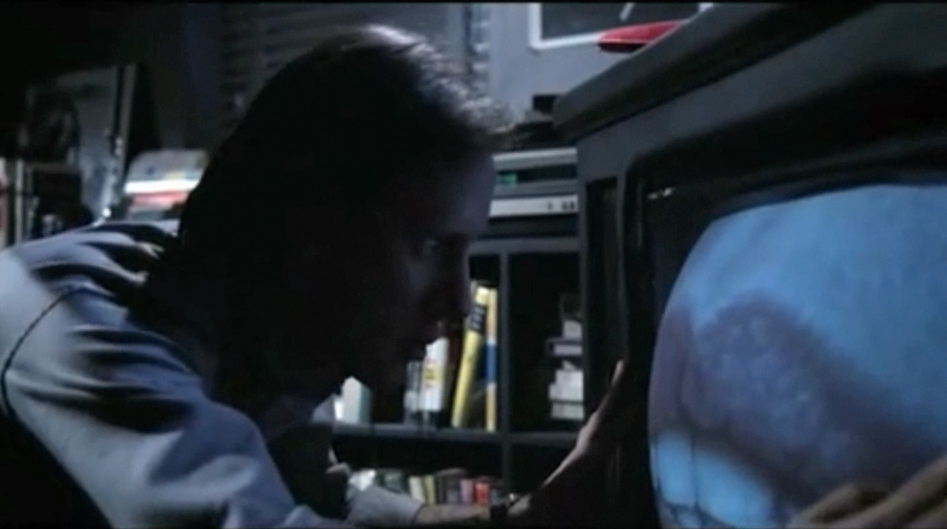
James Rendell
Developing from a relative nascent stage (especially when compared to the study of horror literature and film) to a more established field of inquiry, there is a growing and impressive body of work exploring horror television. This includes collections that unpack the history of TV horror from early innovators to current streaming series (see Belau and Jackson 2018) and the global reach of the genre on TV (see Abbott and Jowett 2021). Often overlooked within academia and consistently ‘absent from the histories of horror’ (Peirse 2020a: 10), the fantastic collection edited by Alison Peirse (2020b) demonstrates how female creatives and practitioners worldwide hold important roles in the making of horror cinema, a genre frequently perceived to be under the dominion of men. The timely New Blood: Critical Approaches to Contemporary Horror (Falvey, Hickinbottom, and Wroot 2020) tackles the nebulous heterogeneity of the genre in the 2010s via a series of case studies that expand on existing debates and approaches surrounding textual depictions, subgenres/cycles, horror’s commercial business, exhibition spaces and platforms, and audience reception. Likewise, David Church’s monograph not only explores the new wave of (post-)horror cinema but goes beyond wider myopic cultural criticism surrounding recent developments within the genre. Church provides a detailed examination of the cycle’s textual qualities where ‘form and style are… functional elements uniting these films as a shared corpus’ (2021: 3). The book also evidences how these films have been received by professional, genre, and populist viewers. This is particularly noteworthy for highlighting the diversity of viewing dispositions, agendas, and responses to horror that eschews monolithic constructions of media reception.
Thinking about other timely developments in horror studies, it is worth highlighting University of Wales Press’ Horror Studies; the first book series solely focused on studying the genre in all its various guises across a plethora of media technologies. Likewise, the BAFTSS Horror Studies SIG convened by Laura Mee, Shellie McMurdo, and Kate Egan and their ongoing virtual events are hugely illuminating. The online talks provide breadth and depth in examining horror media from a range of guest speakers. Moreover, given Covid-19’s cessation of face-to-face events and the often relatively low number of attendees at offline research seminars hosted at universities, these virtual talks are felicitous for both continuing the study of horror and enhancing accessibility for audiences.
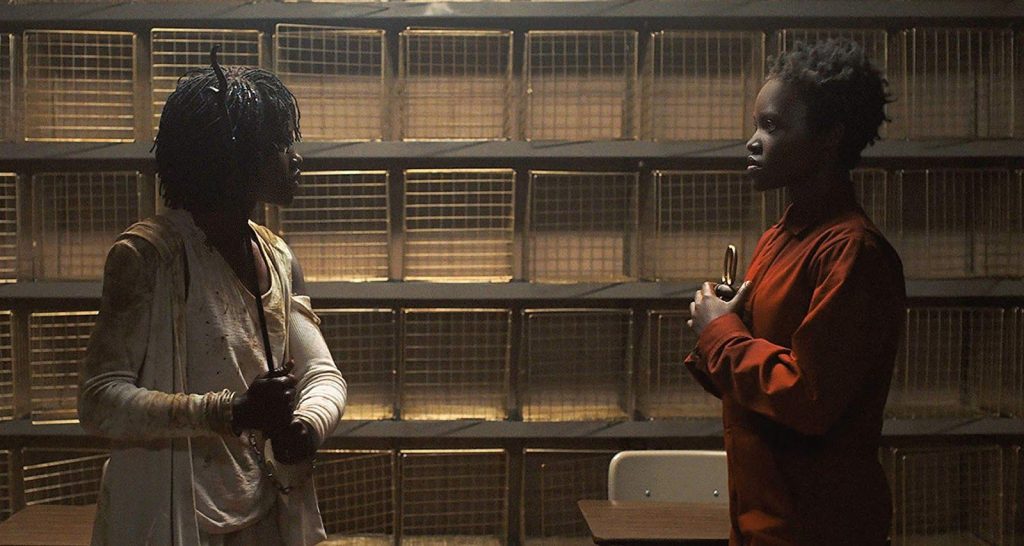
What have you found to be the rewards and/or challenges of teaching horror (to quote a recent SCMS seminar title) “with everything going on right now”?
James Rendell
I think one of the rewards for teaching horror is allowing students to explore the legacy of the genre across media and how they find texts from yesteryear still impactful. In my first-year module Contemporary Popular Television, I screen Ghostwatch (BBC1 1992) for our discussion on TV and liveness. It’s great as most of the students have never heard, let alone seen, it. They find the production to be very scary despite its dated aesthetic and, given its notoriety, find Ghostwatch to be an impressive feat of televisual magic. Likewise, I think another reward is teaching horror to students who would not normally go anywhere near the genre – possibly because they do not like the emotions it elicits in them, the subject matter, or textual depictions – in ways they can still find the class engaging. For example, on my second-year module Media Audiences and Fandom we look at theories of immersion in horror media such as cinema, television, and video games and the subjectivity of individual audience members. We gauge in the class who enjoys horror and who dislikes it, or (dis)likes particular types or styles. We then explore how we might enthrall or distances ourselves from the images onscreen before looking at how fans engage with the genre in their participatory practices. This is effective as it allows all the students to see themselves in the class content and learn key theories, concepts, and debates surrounding horror reception.
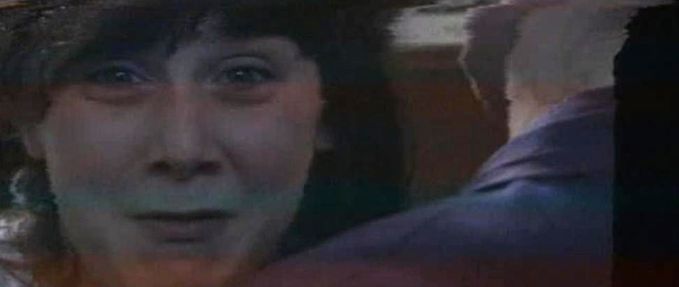
Amanda Howell
My biggest challenge is that I don’t have the opportunity to teach horror cinema at the undergraduate level any more–just one film in my Hollywood history course. Since our Bachelor of Arts program has been cut down to the bone, there’s just no room for substantive engagement with generic entertainment, especially a genre still so culturally derided as horror. I mention this in the context of this roundtable discussion because I see it as the result not just of local economic challenges brought by COVID but also a more widespread devaluing of the Humanities—in Australia and elsewhere— beyond those fields offering the most obvious practical applications. Horror, along with other genres of the fantastic, and popular screen media more generally, are unfortunately just a bit too easy to dismiss as frivolous, as being not appropriate for serious scholarly attention, and consequently as irrelevant to the University’s task of accrediting the workforce of the future. But it would certainly be a great—if challenging—time to engage students with screen horrors by emergent auteurs like Jennifer Kent, Jordan Peele, Babak Anvari as well as established ones like Guillermo del Toro, considering the lens they offer on a world that has become increasingly strange to itself, critical understanding of which might legitimately feed into media-centred education of an informed global citizenry.
Patricia Pisters
What I notice is that many of the female students feel empowered by the new developments of the genre, not just the idea of the final girl, but the entire spectrum of having more access to the wider spectrum of what the genre can address. I do remark that sometimes the male students now feel intimidated and I think it is necessary to keep the gender questions non-binary, and enter these debates with an open not-essentialist way. An inclusive approach toward gender and diversity is both the reward and the challenge in teaching horror. Because of the genre’s explicitness, this is something that is good to mention and agree upon at the start of a seminar.
Brandon West
Like other participants here, I have experienced a lack of opportunities for teaching horror. While I am scheduled to teach a film seminar next academic year, this past year my teaching has been reduced to online, asynchronous composition instruction. As such, getting my students to engage with horror has been largely impossible. I have, however, managed to continue teaching Edgar Allan Poe’s “The Raven,” to which my students continue to respond well. Perhaps one of the main rewards of teaching horror in today’s tumultuous climate is that the genre resonates with students’ anxieties about the present and the looming future. Poe’s exploration of grief and depression proves cathartic and, dare I write, therapeutic for today’s overstressed students.
Johnny Walker
I have found teaching horror during the pandemic and “everything going on right now” to be a relatively stress-free experience, to be honest, given the challenges of retaining student engagement while teaching remotely. I find that students respond very well to the genre in all contexts, even if they don’t ‘like’ horror per se.
I use examples from horror across the whole gamut of my classes. Get Out is the final film of my Cinema and Society class. Students, as one expects, tend to find the film relatable given its overt social focus. Of course, the film succeeds in highlighting some of the most troubling aspects of our society but, in my experience, this leads to more dynamic and impassioned discussion in the classroom. (Get Out is also, to be frank, a very good film, which certainly helps.) I tend to use horror when teaching genre theory, too; my students enjoy using horror films to debunk much of what has been written about the genre’s allegedly affective properties. I also use The Herd with my first years when teaching communication strategies; we consider the film – as per my article – alongside the campaign strategies of People for the Ethical Treatment of Animals. In this regard, using ‘horror’ in various contexts remains forever rewarding for me, as it is a genre that continues to stimulate and engage.
Emma Train
I primarily teach literature courses and this past year I have assigned my students Octavia Butler’s dystopian/horror novel Parable of the Sower (1993). The novel envisions the dystopian environment of a 2024 California completely ravaged by drought, famine, and a collapse of any meaningful government. The novel is an emotionally challenging read, and is often violent and brutal. But my students absolutely fall in love with this novel precisely because of the uncanny way it speaks to their own reality. These students are Gen Zers who were born into the realities of a climate crisis, who came into political consciousness and of voting age under the Trump administration, and who are now experiencing college during a global pandemic. These young students don’t want “escapist” narratives; they want stories that validate their anxiety about the present horror of the world around them. As a teacher, it’s extremely rewarding—and often rare!—to witness first hand that “aha” moment in students, where they graft onto a text so personally and collectively, especially texts that are in under-assigned “genre” categories and that students therefore have little exposure to. In a way, “everything going on right now” clarifies the function (and the genius) of speculative genres and underscores the necessity of diversifying the canon we teach (in both literature and film).
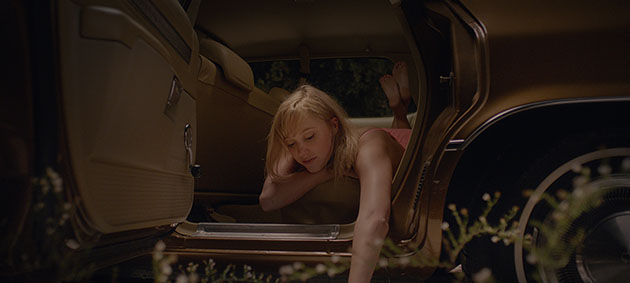
What do you find to be horror’s distinctive capacities for speaking to the contemporary moment?
Emma Train
In one word: survival. I think horror films and texts so often illuminate the material and physical precarity of non-normative bodies—queer bodies, female bodies, bodies of color—and the trauma and violence incurred in order to survive and thrive. Horror so frequently stages the drama of concepts like death, freedom, bodily agency, and survival. What does it mean to survive in the contemporary moment, and to survive for whom and for what? Film’s like Get Out articulate these questions so brilliantly and I hope more horror films continue to do so in the future, especially with an attention to diversifying the kinds of characters we see in the genre.
Brandon West
We live in horrifying times. COVID-19, climate change, declining civil liberties, and domestic unrest: all existential threats co-existing today. Any one of these issues would be concerning; combined they make the future look bleak indeed. Increasingly, therefore, I find horror the genre of contemporary reality. It speaks to the moment and encapsulates how I and many others feel about where the world is and may be heading. Horror is a cathartic outlet for our concerns about these very real issues, allowing us to engage them in a safe medium.
Harry Warwick
I wonder whether horror might speak, less to the contemporary moment per se, more to a certain contemporaneousness in general—that is, to the simultaneity of particular economic structures and pressures in different parts of the world. Take, for instance, Bong Joon-ho’s widely cited reflection (in an interview with Birth.Movies.Death) on the global popularity of Parasite (2019): ‘I tried to express a sentiment specific to Korean culture, and I thought that it was full of Koreanness if seen from an outsider’s perspective,’ Bong noted. ‘But upon screening the film after completion, all the responses from different audiences were pretty much the same, which made me realise that the topic was universal, in fact. Essentially, we all live in the same country, capitalism.’ Crucially for us, what seems universal about Parasite—its portrayal of the antagonism, first, between employer and employee, and second, between different employees, vying for the same job—comes most sharply into relief when it turns, at its denouement, to horror, even splatter: that is, when Oh Geun-sae (Park Myung-hoon) bludgeons and stabs the Kim children; their mother, Chung-sook (Jang Hye-jin), skewers Geun-sae in turn; and then Kim Ki-taek (Song Kang-ho) impales the wealthy businessman Park Dong-ik (Lee Sun-kyun).
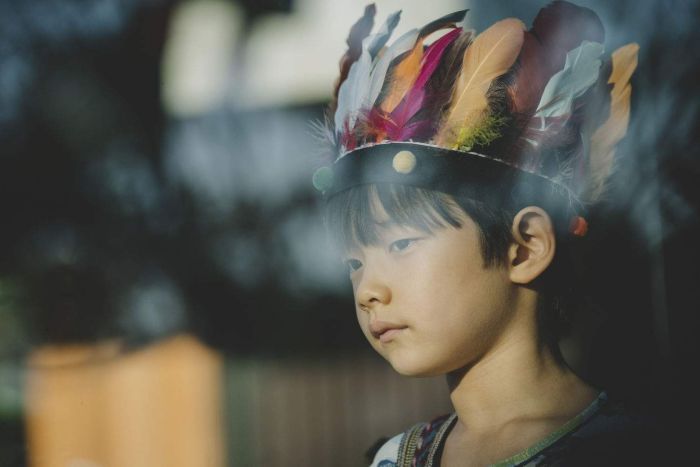
Amanda Howell
The contemporary moment is so strange, so dislocating, so appalling in its spectacles of cruelty, in the scope of suffering and death, that I think that only horror’s generic vocabulary of epistemological challenges and ontological threats—of paranoia and the uncannily familiar made strange, of the repressed and disavowed returning with a vengeance— seems equal to it. Certainly the political character or nature of horror, recognised by Robin Wood, has never been more apposite—and perhaps never so overtly explored by so many filmmakers. The social horror of Jordan Peele’s Get Out (2017) has, for example, only increased in relevance since the film’s release, the spectre of repressed and disavowed white racism returning with a vengeance with the murder of George Floyd, and again with the trial of his killer.
Patricia Pisters
I think the best way to answer this is to quote Mati Diop in an interview about her zombie-romance film Atlantics. When asked about the horror elements in her film, she paraphrases Gramsci who ones said: “The old world is dying, and the new world struggles to be born, now is the time of monsters.” I think we clearly live in a time of transition. On many levels huge struggles for new worlds to be born are going on: Black Lives Matter, MeToo, Climate change, the Corona pandemic and all its implications – I think that part of horror’s capacity to speak of these changes resides in the genre’s capacity to give form and expression to the enormous efforts it takes to confront our (collective) demons of so many traumatic events of the past. I also think it is a sign of these changing times that Promising Young Woman, a rape-revenge film of sorts (invented within the horror subgenre of the slasher film in the 1970s) wins a prize at the Oscars in 2021.
James Rendell
Certainly, I agree with others on this roundtable that horror’s allegorical potential for tapping into the zeitgeist is generated through its genre schemata, visual coda, and thematics of Othering that centre on abject creatures, forces, or objects. This frequently happens when certain subgenres or cycles develop during particular cultural periods. Likewise, as semiotic-laden entities, the monster can change over time and space. Many have noted, for example, that the zombie is a blank canvas for various social commentaries, exemplified in Romero’s original ‘Dead’ trilogy (1968/1978/1985). Moreover, that which Others can also be critiqued through the socio-political qualities of horror, often framing the monster as sympathetic and/or depicting humans and institutions as the real evils – American Horror Story (FX 2011-) demonstrates this well. To offer a recent example, I was amazed, terrified, and deeply moved by Remi Weekes’ His House (2020). Weekes uses the ghost story to engage with refugeedom, displacement, and trauma against a backdrop of hostility, xenophobia, and racism to engage with the wider British (and beyond) cultural climate and critical global issues the film was produced in.

Yet, whilst celebrating horror’s distinct qualities to engage with contemporary moments, I also think it is important not to divorce the genre from wider or overlapping important cultural or industrial points of concern and other fields of study. For example, the children’s horror comedy fantasy film The Witches (Zemeckis 2020), an adaptation of Roald Dahl’s 1983 novel, received widespread criticism for its ableist depictions of monstrosity that resonate with longstanding Othering of non-normative bodies (Stolworthy, 2020). Thus, the genre can demonise as much as it defends certain identities/bodies as Johnny’s excellent work on hoodie horror demonstrates (Walker 2016). Additionally, Get Out and Us (2019) have made Jordan Peele a bankable name for Hollywood horror and shows how genre vehicles with Black casts and/or discussions surrounding race relations/racism can be lucrative; horror’s ongoing popularity in general makes the genre highly profitable. However, Kristen J. Warner’s important work (2015) shows that within profit-driven/risk-adverse mainstream North American television industries, horror series The Vampire Diaries (CW 2009-2017), much like other fictional TV content, suffers from colourblind casting that serves non-white characters so poorly. Similarly, André Brock (2011) identifies in Resident Evil 5 (2009) reductive colonial depictions of savage Black African femininity and masculinity in opposition to the videogame’s civilised white male hero; the latter emblematic of hegemonic representations within triple-A videogame productions. In her study of Black women in horror cinema, Kinitra D. Brooks explains that ‘[f]ascinating work concerning gender continues within critical studies of horror, even after thirty years, but it has often proven inattentive to the intersections of race, failing to examine its own privileging of whiteness’ (2014: 463). These studies raise important questions around representations and meaningful diversity in horror media, and how the genre is theorised.
Moreover, off the wave of Peele’s commercial success and the wider political rallying of the Black Lives Matter movement that has reignited debates surrounding racial representations within the media, horror can also be seen to follow the money. This raises more points of consideration. For example, the anthology series Them (Amazon 2021), whose title appears semantically tethered to US may raise a few questions about the former piggybacking off the latter’s success. Moreover, as Jason Okundaye’s pertinent article on the series argues, Them bombards ‘the audience with scenes of gratuitous, racist violence without having anything interesting to say’ (2021). Many Black audiences view Them as indicative of the industry trying to cash-in on racial suffering, resulting in exploitative ‘Black trauma porn’ (ibid); the series’ creator Little Marvin, and executive producer, Lena Waithe, are both Black, however, many of the directors and producers are white. Horror media’s political economy is equally as important as its political commentary.
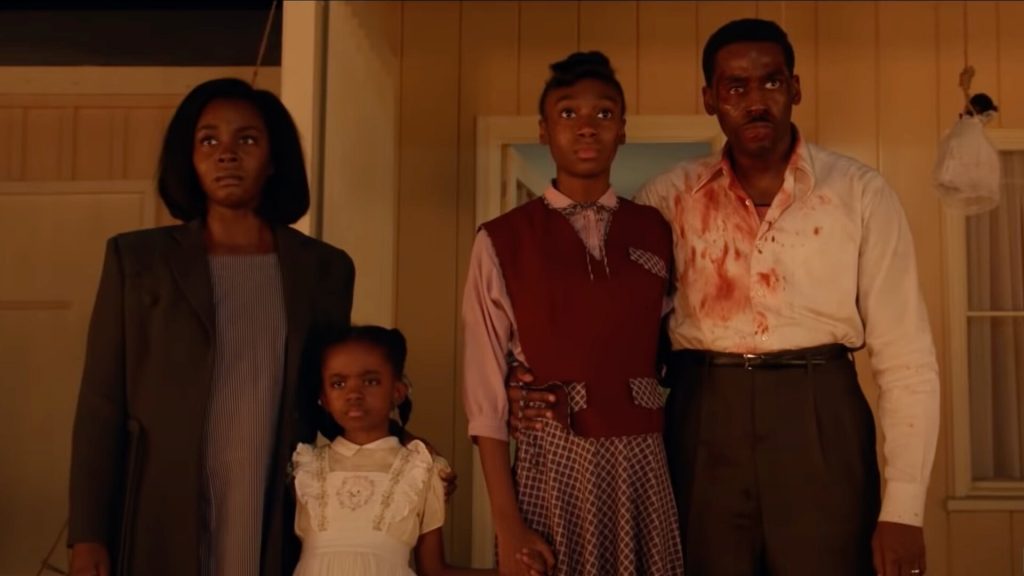
Likewise, the genre may engage with wider cultural debates and dialogues of which fans may use as loci for communal talk and performing subcultural capital. However, the habitus of certain social spaces can also shut down or refute discussions that critically question horror fan objects, for example, depictions of race (see Johnson 2015; Rendell forthcoming). This can be understood as part of the need within Horror Studies and Fan Studies to consider race and ethnicity as central intersectional identity components in responses to horror media, but also socially navigated markers within community settings (see also Young 2014).
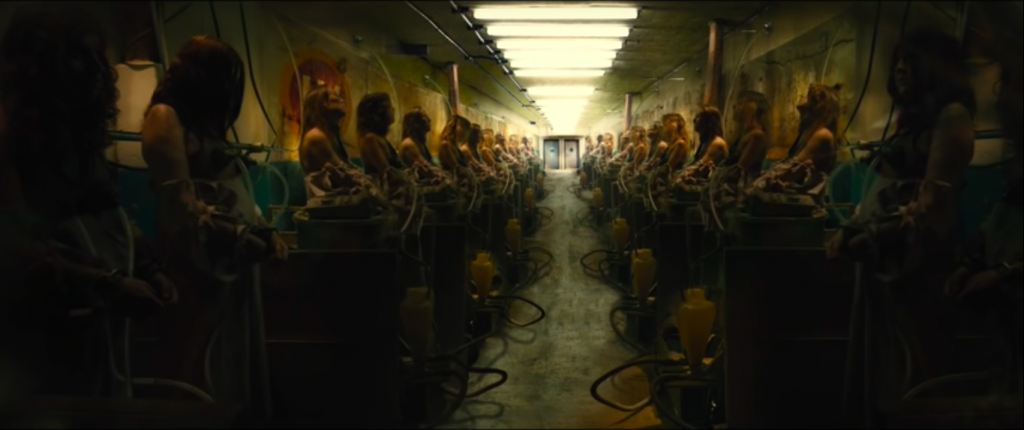
Contributors’ Notes
Amanda Howell teaches screen studies at Griffith University in Queensland, Australia. The author of A Different Tune: Popular Film Music and Masculinity in Action (Routledge 2015), her research focuses on screen gender and genre in a sociocultural frame. She is currently completing a co-authored monograph for Palgrave entitled Monstrous Possibilities: the Female Monster in 21st Century Screen Horror.
Patricia Pisters is professor of film and media culture at the Department of Media Studies of the University of Amsterdam. Her book New Blood in Contemporary Cinema: Women Directors and the Poetics of Horror has appeared with Edinburgh University Press in 2020. See for articles, her blog, audio-visual material and other information also www.patriciapisters.com.
Material Aspects of Subjectivity—A Deleuzian Reading of Images of the Flesh
Review of New Blood in Contemporary Cinema: Women Directors and the Poetics of Horror (Edinburgh, 2020) forthcoming in our Fall 2021 issue (19.3).
James Rendell is Lecturer in Creative Industries at University of South Wales. His research has been published in Transformative Works and Cultures; Participations: Journal of Audience and Reception Studies; East Asian Journal of Popular Culture; Convergence: The International Journal of Research Into New Media Technologies; and Global TV Horror. He has forthcoming work in New Review of Film and Television Studies; The Soundtrack; and The Television Genre Book. His forthcoming monograph Transmedia Terrors in Post-TV Horror: Digital Distribution, Abject Spectrums and Participatory Culture is to be published with Amsterdam University Press.
‘I am (not) major’: anti-fan memes of Paramount Pictures’ Ghost in the Shell marketing campaign
The Politics of Casting and Media Fandom: A Conversation between Kristen Warner and James Rendell
Extreme Asia: the rise of cult cinema from the Far East [Book review]
Emma Train is a PhD candidate in the Department of English at the University of Texas at Austin, where she is writing a dissertation on contemporary queer ecopoetics. She is a graduate of UC Davis’s MFA program in poetry. Her poetry has appeared or is forthcoming in the Colorado Review, the Berkeley Poetry Review, Grist, and Interim, and her scholarship is forthcoming in GLQ.
What is not real can be felt into being: affective threat in Jordan Peele’s Get Out
Johnny Walker is Senior Lecturer in Media at Northumbria University. His books include, as author, Contemporary British Horror Cinema: Industry, Genre and Society (Edinburgh, 2015) and, as editor, the second edition of the late Peter Hutchings’ seminal work Hammer and Beyond: The British Horror Film (Manchester, 2021). http://drjohnnywalker.co.uk.
Walker’s article “Activist Horror Film: The Genre as Tool for Change” is forthcoming in NRFTS
Harry Warwick is a Leverhulme Early Career Fellow in the Department of English and Comparative Literary Studies at the University of Warwick. He is currently working on a monograph provisionally titled The Aesthetics of Enclosure: Dystopia and Dispossession in the Hollywood Science-Fiction Film, 1973-2017.
Commodity horror: Videodrome and the industrialisation of Canadian culture
Brandon West is a PhD student in the English Department at the University of Kentucky. His dissertation investigates identity (re)formation in gothic fiction, both literature and film. He is the author of At the Edge of Existence: Liminality in Horror Cinema since the 1970s, and he is writing a second monograph with the tentative title Revulsion, Repetition, and Revenge: The Problem of Sexual Violence in Contemporary Horror Cinema.
West’s article “Murky Waters: Loch Ness and Herzogian Notions of Truth” is forthcoming in NRFTS
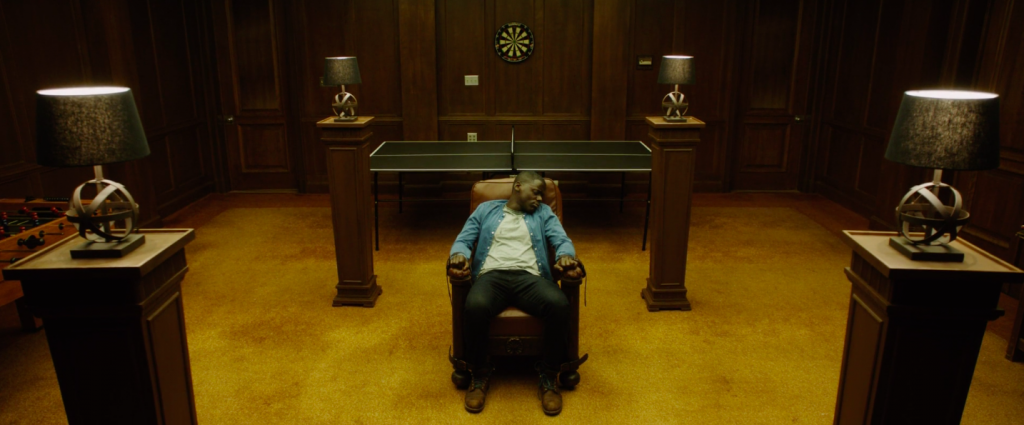
Bibliography
Abbott, S and L. Jowett (eds.). 2021. Global TV Horror. Cardiff: University of Wales Press.
Arnold, Sarah (2013) Maternal Horror Film: Melodrama and Motherhood. New York: Palgrave Macmillan.
Belau, L. and K. Jackson (eds.). 2018. Horror Television in the Age of Consumption: Binging on Fear. New York: Routledge.
Brinkema, Eugenie (2019) ‘Sticky, Nimble, Frantic, Stuck: A l’Intérieur and the Feel of Horror.’ Literature Interpretation Theory, 30:1, 62-79.
Brock, A. 2011. “‘When Keeping it Real Goes Wrong’: Resident Evil 5, Racial Representation, and Gamers.” Games and Culture 6 (5): 429-452.
Brooks, K. D. 2014. “The importance of neglected intersections: Race and gender in contemporary zombie texts and theories.” African American Review 47 (4): 461-475.
Calvert, B. 2014. “‘This Means Bodies’. Body Horror and the Influence of David Cronenberg.” In The Multiple Worlds of Fringe: Essays on the J.J. Abrams Science Fiction Series, edited by T. Cochran, S. Ginn, and P. Zinder. 186-200. Jefferson: McFarland.
Church, D. 2021. Post-Horror: Art, Genre, and Cultural Elevation. Edinburgh: Edinburgh University Press.
Clover, Carol (1992) Men, Women and Chain Saws: Gender in the Modern Horror Film. Princeton: Princeton University Press.
Creed, Barbara (1993) The Monstrous-Feminine: Film, Feminism, Psychoanalysis. London and New York: Routledge.
Falvey, E., Hickinbottom, J., and J. Wroot (eds.). 2020. New Blood: Critical Approaches to Contemporary Horror. Cardiff: University of Wales Press.
Harrington, Erin (2018) Women, Monstrosity and Horror Film: Gynaehorror. Abingdon and New York: Routledge.
Hills, M. 2005. The Pleasures of Horror. London: Continuum.
Hills, M. and R. Williams. 2005. “Angels’ Monstrous Mothers and Vampires with Souls: Investigating the Abject in “Television HHorror”.’ In Reading Angel: The TV Spin-Off with a Soul, edited by S. 203-217. London: I.B. Tauris.
Jancovich, M. 2000. “‘A Real Shocker’: Authenticity, genre and the struggle for distinction.” Continuum 14 (1):23-35.
Janisse, Kier-la (2012) House of Psychotic Women: An Autobiographical Topography of Female Neurosis in Horror and Exploitation Films. Godalming: Fab Press.
Jenner, M. 2017. “Binge-watching: Video-on-Demand, Quality TV and Mainstreaming Fandom.” International Journal of Cultural Studies 20 (3): 304-320.
Johnson, C. 2005. Telefantasy. London: BFI.
Johnson, C. 2019. Online TV. London: Routledge.
Johnson, D. D. 2015. “Misogynoir and Antiblack Racism: What The Walking Dead Teaches us About the Limits of Speculative Fiction Fandom.” Journal of Fandom Studies 3 (3): 259-275.
Jowett, L. and S. Abbott. 2013. TV Horror: Investigating the Dark Side of the Small Screen. London: I.B. Tauris.
Lotz, A. D. 2017. Portals: A Treatise on Internet-Distributed Television. Michigan: Maize Books.
Matrix, S. 2014. “The Netflix effect: Teens, binge watching, and on-demand digital media trends.” Jeunesse: Young People, Texts, Cultures 6 (1): 119-138.
Mumford, G. 2019. “Stranger Things 3 smashes viewing figure record for Netflix.” The Guardian, 9th July. https://www.theguardian.com/tv-and-radio/2019/jul/09/stranger-things-3-record-viewing-figures-for-netflix
Ndalianis, Angela (2012) The Horror Sensorium: Media and the Senses. Jefferson: McFarland.
Okundaye, J. 2021. “‘Black trauma porn’: Them and the danger of Jordan Peele imitators.” The Guardian, 21st April. https://www.theguardian.com/tv-and-radio/2021/apr/21/black-trauma-porn-them-jordan-peele-amazon
Patton, Elizabeth A. “Get Out and the legacy of sundown suburbs in post-racial America,” New Review of Film and Television Studies, 17.3 (2019): 349-63. https://www.tandfonline.com/doi/full/10.1080/17400309.2019.1622889
Peirse, A. 2020a. “Women Makes (Write, Produce, Direct, Shoot, Edit, and Analyze) Horror.” In Women Make Horror: Filmmaking, Feminism, Genre, edited by A. Peirse. 1-23. New Brunswick: Rutgers University Press.
Peirse, A. (ed). 2020b. Women Make Horror: Filmmaking, Feminism, Genre. New Brunswick: Rutgers University Press.
Pisters, Patricia (2020) New Blood in Contemporary Cinema: Women Directors and the Poetics of Horror. Edinburgh University Press.
Rendell, J. 2019a. “Black (anti)fandom’s intersectional politicization of The Walking Dead as a transmedia franchise.” Transformative Works and Cultures 29. http://dx.doi.org/10.3983/twc.2019.1477.
Rendell, J. 2019b. “A picture is worth a thousand corpses: Audiences’ affective engagement with In the Flesh and The Walking Dead through online image practices.” Participations: Journal of Audience & Reception Studies 16 (2): 88-117.
Rendell, J. 2021. “Tracing Terror-Bytes: Ring Saishusho as Japanese TV Horror, Online Transcultural J-Horror Fan Object and Digital Only-Click Television.” In Global TV Horror, edited by S. Abbott and L. Jowett. 215-231. Cardiff: University of Wales Press.
Rendell, J. forthcoming. Transmedia Terrors in Post-TV Horror: Digital Distribution, Abject Spectrums and Participatory Culture. Amsterdam: Amsterdam University Press.
Sexton, J. 2015. “Creeping decay: cult soundtracks, residual media, and digital technologies.” New Review of Film and Television Studies 13 (1): 12-30. https://www.tandfonline.com/doi/full/10.1080/17400309.2014.985024
Schubart, Rikke (2018) Mastering Fear: Women, Emotions and Contemporary Horror. New York: Bloomsbury Academic.
Stolworthy, J. 2020. “The Witches: Warner Bros apologises for ‘shockingly out of touch’ depiction of people with disabilities.” Independent, 5th November. https://www.independent.co.uk/arts-entertainment/films/news/the-witches-anne-hathaway-disabilities-split-hand-b1611312.html
Walker, J. 2016. Contemporary British Horror Cinema: Industry, Genre and Society. Edinburgh: Edinburgh University Press.
Warner, K. J. 2015. The Cultural Politics of Colorblind TV Casting. London: Routledge.
Wheatley, H. 2006. Gothic Television. Manchester: Manchester University Press.
Wroot, J. 2017a. “Battle Royale as a One-Film Franchise: Charting a Commercial Phenomenon through Cult DVD and Blu-ray Releases.” In Cult Media: Re-packaged, Re-released and Restored, edited by J. Wroot and A. Willis. 11-29. Basingstoke: Palgrave Macmillan.
Wroot, J. 2017b. “Letting the Fans Be Involved: Third Window’s Cultivation of an Audience for Disc Releases.” In DVD, Blu-ray and Beyond: Navigating Formats and Platforms within Media Consumption, edited by J. Wroot and A. Willis. 73-91. Basingstoke: Palgrave Macmillan.
Wroot, J. 2020. “Bloody Muscles on VHS: When Asia Extreme Met the Video Nasties.” In New Blood: Critical Approaches to Contemporary Horror, edited by E. Falvey, J. Hickinbottom and J. Wroot. 107-123. Cardiff: University of Wales Press.
Young, H. 2014. “Race in Online Fantasy Fandom: Whiteness on Westeros.org.” Continuum: Journal of Media and Cultural Studies 28 (5): 737-747.
